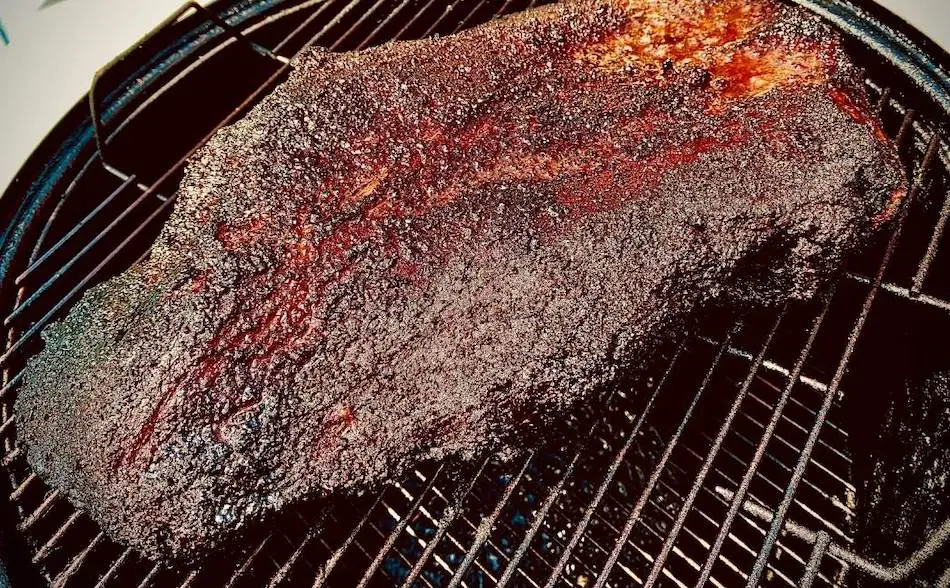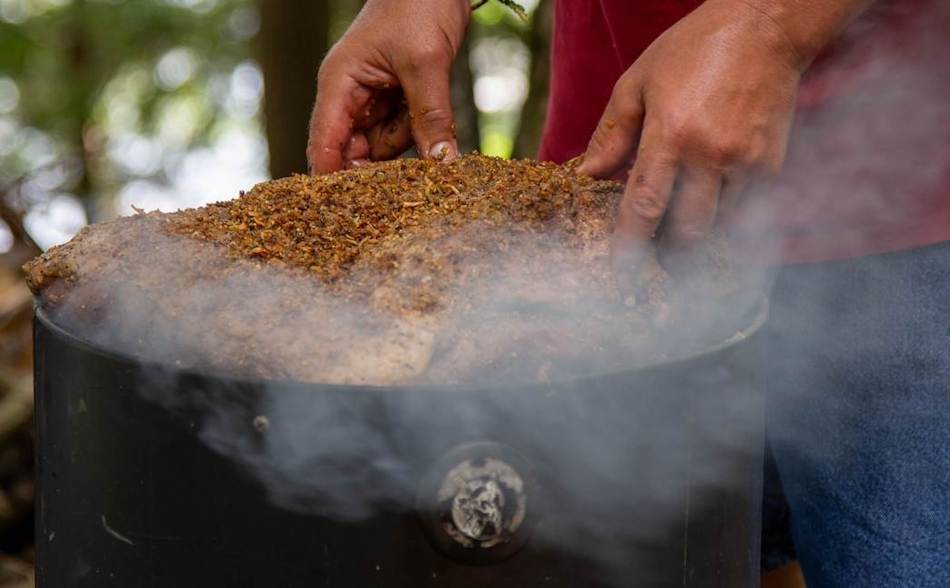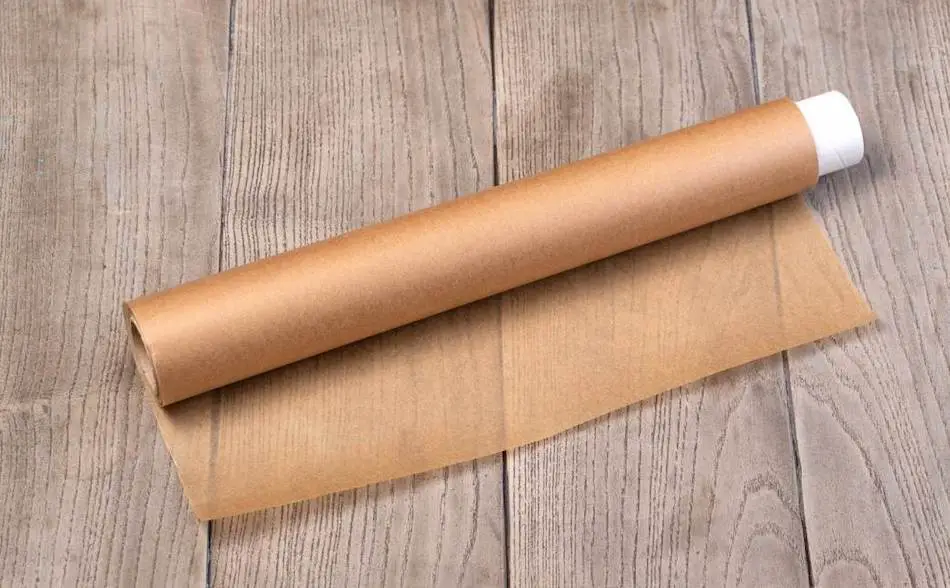
Believe it or not, an unwrapped ‘naked’ brisket can still be tender, juicy and full of flavor. We all know about the foil wrapped brisket, and thanks to Aaron Franklin, everyone is trying the butcher paper wrap. But what about an unwrapped brisket? All three techniques have their pros and cons, but I wanted to know all there was to know about the naked brisket, so I did some research. An unwrapped brisket is straightforward and easy to manage if you follow a few basic steps. I’ll walk you through the step-by-step process of some world’s best pitmasters and show you how they manage the naked brisket.
Wrapping a brisket while smoking it can have both pros and cons. One pro is that wrapping the brisket can help keep it tender and moist. Wrapping also helps push the brisket through the “stall” and can speed up the cooking process. However, wrapping a brisket can also have some drawbacks. One con is that the risk of the brisket turning out tough and dry is increased when it is not wrapped. Wrapping the brisket also takes longer to cook and can result in a softer bark compared to a naked brisket. Wrapping the brisket can also prevent it from being exposed to too much smoke, which can result in a bitter taste. Ultimately, whether or not to wrap a brisket is a matter of personal preference and will depend on the desired outcome.
Key Points
| Recommendation | Explanation |
|---|---|
| Set temperature between 200°F and 220°F | Low-and-slow cooking is key for a tender, juicy brisket |
| Spritz the brisket every hour | Moisture will cool the meat and slow down the cook |
| Dry brine the brisket with salt | Helps the meat retain moisture |
| Choose meat with good marbling | Will make the meat tender and juicy |
| Use wood sparingly | An unwrapped brisket is exposed to smoke for a long time, which can cause a bitter taste |
| Inject the brisket | Helps replace lost moisture |
| Clear the calendar | A naked brisket takes longer to cook, so plan accordingly |
The Pros
- An unwrapped brisket has a much firmer bark. A firm bark is the most obvious difference between a wrapped and unwrapped brisket. A foil wrapped brisket will often make the bark soggy. Many people who wrap briskets in butcher paper find the bark to be far better than a foil brisket, but a slightly softer than a naked brisket.
- You may find a naked brisket has more flavor. Many people find an unwrapped brisket to have a more beefy flavor.
- A naked brisket has a smokier taste. It will taste smokier than a wrapped brisket because it has been exposed to smoke for longer.
The Cons
- When smoking a brisket unwrapped, you risk the brisket turning out tough and dry. Wrapping brisket in foil helps tenderize the meat, making it moist and juicy.
- The other downside of skipping the wrapping is the brisket will take longer to cook. Wrapping helps push the brisket through the stall. A wrapped brisket will shave a few hours from the cook. When a brisket is wrapped in foil, the meat is almost steamed and the foil holds in the heat, which speeds up the cooking.
| Pros | Cons |
|---|---|
| Wrapping helps tenderize meat | Risk of brisket turning out tough and dry |
| Wrapping helps push brisket through the “stall” | Wrapping takes longer to cook |
| Firmer bark | Wrapping in foil or butcher paper can result in a softer bark compared to a naked brisket |
| More flavor | |
| Can prevent over-smoking | |
| Wrapping in foil or butcher paper can result in a softer bark compared to a naked brisket | |
| Wrapping the brisket can prevent it from being exposed to too much smoke, which can result in a bitter taste |
What Temperature To Smoke Unwrapped Brisket?
If you’re going to attempt an unwrapped brisket, keep the temperature no higher than 220°F. Any higher than this might dry out the meat. I’ve seen people smoke brisket at 200°F but it will take about 16 hours or longer. A brisket at 200°F will have a nice smoke flavor because it’s exposed to smoke for such a long period.

Wood and Smoke – Choose Carefully
If attempting an unwrapped brisket, be careful which wood you choose and how much you use. Since you will expose the meat to smoke for such a long period, the meat is at risk of becoming bitter from being over smoked. A wrapped brisket will absorb smoke for about 6 to 8 hours before being protected by the wrapping. A naked brisket will be exposed to the smoke for the duration of the cook, which could be as long as 18 hours.
When selecting a smoking wood for an unwrapped brisket, be careful which smoking wood you use. If you expose the brisket to 18 hours of mesquite, then you will probably end up with a bitter brisket. There’s nothing wrong with keeping a steady flow of smoke, especially during the first stage of the cook. However, during the second phase of the cook, you might want to reduce the amount of wood.
7 Tips For Smoking a Naked Brisket
Although YouTube comparison videos are interesting, they aren’t conclusive because each method requires its own way of cooking. There’s a way to smoke a naked brisket that differs from a wrapped brisket. Here are 7 tips for smoking a naked brisket:
- If you’re thinking about smoking a brisket without wrapping, you have to get all the other techniques and decisions right. Your brisket is vulnerable when it’s unwrapped, so you need to be mindful of certain things.
- Choose a brisket with marbling. When shopping for brisket, buy meat with as much marbling as you can afford. Marbling (the fatty striations between the meat) will help keep the brisket moist and juicy. If you buy a lean brisket with little to no marbling, there’s a good chance it will dry out during the cook, especially if you are smoking the brisket unwrapped.
- Another way to help the brisket stay moist is dry brining. The salt in the brine helps the brisket retain moisture, preventing the meat from drying out. To dry brine a brisket, rub kosher salt or sea salt into the meat the day before cooking and leave it in the refrigerator overnight. The salt will help the naked brisket immensely. Should I Brine Brisket?
- When smoking a naked brisket, keep the temperature of your smoker low (between 200°F and 220°F, no higher). If you expose the brisket to high heat for the length of the cook, by the time the brisket reaches a 203°F internal meat temperature, the meat will be dry.
- When cooking a naked brisket, it’s important to give it a regular spritz with a spray bottle. This will keep the brisket cool and prevent it from drying out. Spritz with apple juice, beer, or apple cider vinegar using a regular spray bottle.
- Another way to get extra moisture deep inside the meat is by injecting. Most competition pitmasters will inject brisket because judges only take one bite, so it has to be good. A naked brisket will lose a lot of moisture in the second stage of the cook, so wrapping will help prevent this from occurring. Pumping the brisket will also add flavor. For more information on injecting brisket, check out an article I wrote a while back: Should I Inject Brisket?
- After smoking a brisket without wrapping, ensure you allow adequate resting time for the meat. Resting gives the meat a chance to reabsorb moisture. If you don’t rest, all the juice will spill out of the meat and cause it to become dry.
How Much Quicker Is A Wrapped Brisket?
The longer cook time is the major drawback with the naked brisket. A brisket wrapped in foil or butcher paper can easily take 2 hours off the total cook time. If you’ve cleared your schedule to smoke a brisket, then you can take your time with an unwrapped brisket. However, if you need the brisket done by a certain time, wrapping will help push the meat through the stall to the finishing line.
The Naked Brisket vs The Stall
The stall occurs when the meat reaches about 150°F, then begins to sweat which cools the meat. The stall can last for several hours and plateau around 160°F before rising up towards 180°F to 190°F. The stall can be extremely frustrating when you want the meat ready for a specific time. Wrapping is the best solution to push through the stall, but you can also increase the heat. Always monitor the internal temperature of the brisket because once the meat passes the stall, the temperature can rise quickly.
The Bark On A Naked Brisket
- Bark is a combination of rub, dried meat, and smoke mixed to form a crust.
- Developing the bark is an art form and a learned skill.
- Most pitmasters believe the meat will only absorb smoke for the first 6 to 8 hours of the cook. Once the bark has developed, then the smoke cannot penetrate the meat. However, this belief isn’t accurate according to food scientists. Smoke will continue to flavor and penetrate the meat long after the brisket has formed a bark.
- The method you choose to smoke brisket depends on what’s important to you. If having a tender, juicy brisket is most important to you, then you are likely to wrap. If a firm bark is your priority, then a naked unwrapped brisket is the way to go.
Wrapping Damages The Bark
Steam and moisture will soften the bark. Some pitmasters will give the meat one last spritz before wrapping and then put the brisket back in the pit. This practice will steam or even braise the brisket, making it tender and juicy, but can turn the bark to mush. Some pitmasters will put the brisket back onto the grill just before slicing to harden the bark after removing the wrapping. If you practice this technique, be extremely careful because you don’t want to dry out your meat just before slicing. Keep the heat low and gently rotate the brisket for about 10 minutes or so.
Paper vs Foil
Pink unwaxed butcher paper allows the brisket to breathe a little more than aluminium foil. The butcher paper will also protect the bark. Foil will almost braise the meat because it traps all the moisture, but as mentioned before, this will make the bark mushy.

Paper vs Naked
Both paper and a naked brisket will have a nice bark, but the naked brisket will be crispier. A naked brisket will also taste smokier and have more of a beefy flavor. In terms on tenderness and juiciness, a butcher paper wrapped brisket will have more moisture. If you’re interested in trying butcher paper, Reynolds now sell it on Amazon. Check the latest price here.
Unwrapped Gives More Smoke Flavor
One of the most obvious differences between a wrapped and unwrapped brisket is the smoke flavor. A wrapped brisket isn’t going to taste as smokey as a naked brisket because the foil will shield the meat from taking on smoke. On a brisket takes 12 hours to cook, you would likely wrap the brisket at the 6 or 7 hour mark of the cook. So a naked brisket will spend double the time in smoke. Some people argue that a brisket will only take on smoke for the first few hours anyway, however, the meat will still absorb some smoke.
My Favorite Brisket Tools
Thanks for checking out this article. I hope you learned a few things. Here are some of my favorite tools I use when smoking brisket that may be useful to you. These are affiliate links, so if you decide to purchase any of these products, I’ll earn a commission. But in all honesty, these are the tools I recommend to my family and friends who are just starting out.
Meat Injector: Injecting meat is a great way to take your barbecue to the next level and help you make competition-style brisket. An injector is the only way you will be able to get flavor and moisture into the middle of the meat. The Beast Injector is a stainless steel injector that is sturdy and affordable. Check the latest price on Amazon here.
Brisket Marinade: The best injection solution on the market is the Butcher BBQ Brisket Injection. This marinade is used in competitions and is made by World Barbecue Champion pitmaster, Dave Bouska. You can find the marinade on Amazon here.
Butcher Paper: Wrapping brisket in butcher paper has become a huge trend in barbeque thanks to Aaron Franklin. Wrapping your brisket in paper will give you a nice brisket bark. However, you can’t just use any old paper, it has to be unwaxed, food grade paper. You can find it on Amazon here.
Brisket Rub: These days I make my own rub when possible, but I always have a few pre-made rubs for when I’m running low. Barbecue guru Malcom Reed produces Killer Hogs, one of the best brisket rubs I’ve found over the years. Another great rub is Slap Yo Daddy, made by brisket master and multiple World Barbecue Champion, Harry Soo.
Meat Thermometer: There are dozens of fancy thermometers on the market, but I still use my trusty TP20. For around $50, I have a high-quality meat thermometer with two probes, and can track the temperature of my smoker with one probe, and my meat with the other probe. The ThermoPro TP20 is an Amazon Best Seller because it’s the easiest thermometer to operate, is durable, highly accurate, and comes with pre-programmed meat settings.
Instant Read Thermometer: Arguably, the second most important tool you need is a fast and accurate instant-read thermometer. These tools play an important role in the latter stages of the cook when the meat needs regular checking in multiple areas. I use the ThermoPro TP19 because it can do everything a ThermaPen can do, but for a fraction of the cost. You can check out the TP19 on Amazon here.
Advanced Thermometer and Automatic Temperature Controller: Once you’re ready to take things seriously, the FireBoard 2 Drive is a six-channel Bluetooth/Wi-Fi thermometer that can monitor up to 6 pieces of meat, control and graph your cook sessions on your smartphone, and attaches to an an automatic blower that will convert your charcoal smoker to a set-and-forget. This is one of the most advanced meat thermometers on the market. You can check it out on the FireBoard website here.
